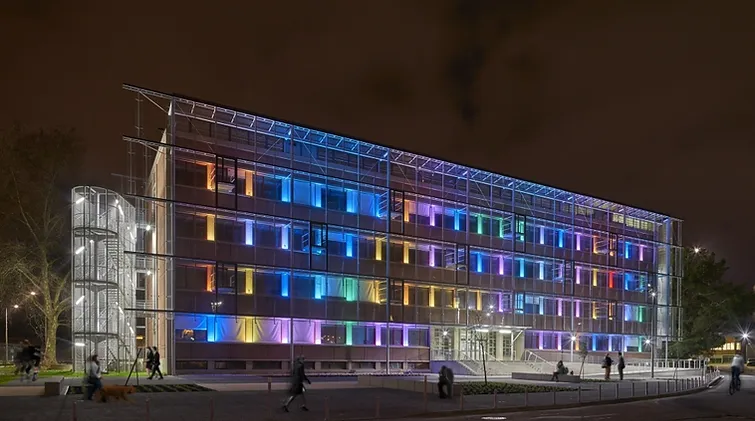
1. Lighting of Solid Facade
Floodlighting on the solid façade will flatten the façade, and as the façade rises, the brightness of the façade will gradually decrease and a low contrast transition to the dark night sky will occur. The use of floodlighting highlights the surface texture of the facade material. And for those facades that do not have texture, the light that spreads out over the façade forms a light spot that itself forms the important pattern of the Façade

02. Lighting for vertically divided facade
The facade effect of vertical separation is enhanced by a narrow light projection on the vertically separated facade. To avoid shadows, the luminaire should be properly positioned and the lighting direction should be oriented parallel to the facade.

3. Lighting for horizontally separated facades
When project light on the horizontally separated facade, the upward lighting close to the facade will enhance the three-dimensional feeling of the facade. By increasing the distance of the luminaire from the façade, the long and heavy shadow of the raised portion of the façade can be reduced.
Sometimes, LED linear lights can be arranged on the horizontal partition structure of the facade to represent the horizontal partition of the building.

4. Lighting with concave-convex facade
Generally speaking, the different parts of the concave-convex facade can be treated with different illuminance or different light color to enhance the rhythm of the facade appearance. The use of flood light with wide beam angle will reduce the contrast between the bump of the façade, making the building “flat. “.

5. Illumination of a facade with window or holes
When lighting the façade with window or holes, it should be noted that the lighting of the façade does not produce glare to the people indoors. The general use of lighting to highlight the outline of the window or hole will enhance the building’s sense of drama.

6. Strip-shaped facade lighting
For the strip-shaped layered façade, by spreading the light from the inside out, it reinforces the building’s presence at night and creates a strong contrast between the lighted windows (interior) and dark façades.

7. Lighting of Façade with Transparent Glass Curtain Wall
In daylight, the transparent façade of the building is dark and reflects its surroundings. The presence of indoor lighting allows one to see the interior of a building. The upper light on the interior top surface enhances the presence of the roof, making the interior brighter at night, and the framing of the facade creates a silhouette effect. When linear lighting is applied to the top surface of each floor, the horizontal structure of the building is strengthened.

There is no fixed method of lighting different forms of façades. The most important thing is that the lighting designer should master the corresponding effects and advantages and disadvantages of different methods, then make decision according to the overall creative design concept.







 US 15701
US 15701  GB 11788
GB 11788  CA 10275
CA 10275  AU 7359
AU 7359  BR 2700
BR 2700  IE 2560
IE 2560  NZ 1227
NZ 1227  SG 782
SG 782 

